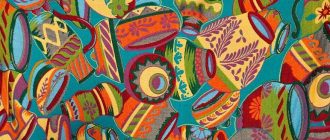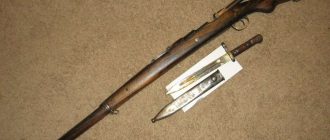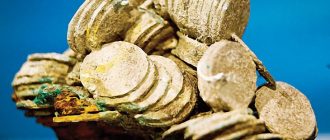The first half-pint, amethyst diamond-quilted fake bottle to cause havoc among serious collectors was not made in South Jersey, but came from Czechoslovakia and, I was informed, sold wholesale for $6 at the start.
The ultimate consumer was invited to buy it at “bargain prices” that ranged from $250 to $300. They are too heavy. The neck is not right. The diamond-quilting is so thick as to appear pressed instead of being the finely blown and expanded diamond it was supposed to be.
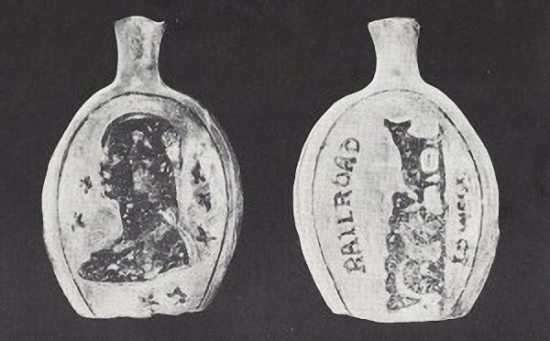
From Czechoslovakia, and of the same period as the bottle just described, also came the heavier diamond-patterned flask. It will be noted that it exhibits the same type of workmanship as the first one. It appeared in a deep sapphire blue instead of amethyst. These are the only two imported bottles of this type to come to the attention of the writer. The entire base of the blue bottle pictured was ground down to suggest the wear of age. It would take a million years of shelf-rubbing to wear it down to that extent.
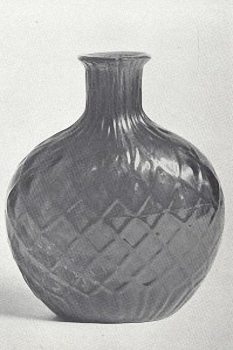
These fakes came on the market about 1930. Three mid-western dealers decided to sell them over a large area, and they apparently co-ordinated their operations. Early on the same morning, so that there would be no opportunity for discussion among the selected victims, one man sent day letters from Toledo to a large number of well-known dealers and collectors throughout the country to this effect: I am informed you are interested in rare flasks.
Kindly advise if you would like me to ship you an amethyst diamond-quilted toilet bottle, express Subject to examination, at three hundred dollars. He himself was not known as a dealer. It caught a good many, for it was a cleverly planned maneuver, which the plotters figured would fool many collectors, in particular those who are always on the watch for “variants.” Sure enough several paid the “bargain price.”
There could be no legal redress, because, after all, there was no technical misrepresentation and the buyer did have an opportunity to examine the piece. If inveterate bargain hunters thought it was rarer than the familiar Stiegels that sold at $500 to $1000, it was their funeral. I did not wire for one, but I know many who did. Some promptly shipped the flask back. Others sent checks.
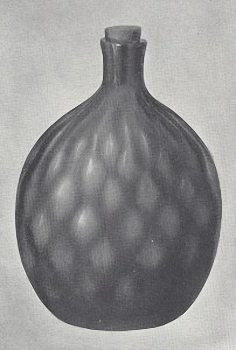
One smart collector let the box stay in the express office after he had refused to take it. The would-be seller wrote and wired, reducing the price several times, but as it did not decline or $2.00, the wise collector, being Pennsylvania Dutch, did not buy it.
Along about 1935, blown flasks were being produced in South Jersey, contemporaneously with the lily pad bowls, pitchers, creamers, etc. and were made by the same individual who did the copies of the early blown glass. These South Jersey reproductions, which are fully illustrated here, were blown in a workshop located in the rear of his home. From individual specimens of high-class arr work, he turned to blue, amethyst, and emerald-green imitations of Stiegel and Ohio Stiegel types.
These cannot be called exact copies of early American examples. It is possible that the maker may have been prompted by suggestions from some antique dealer who saw profitable possibilities for himself. It may, of course, it’s merely a coincidence that some of the first of the new “South Jersey Stiegels” turned up in Ohio, too far away from the source of the supply to arouse suspicion as to the real reason for the bargain prices of the “rare items.”

At the time I visited the workshop of the glass worker in South Jersey, in the mid-1930′s, his line included diamond-quilted bottles in all sizes from miniatures to full pints in amethyst and other colors; blown bottles in fine shades of color in swirled effects, as well as one in a broken-column design. These may all be seen on Plates 36, 37, 38 and the frontispiece.

